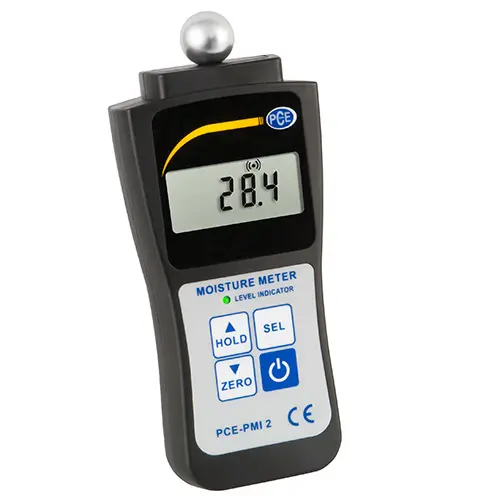How to Use a Moisture Meter to Detect Surprise Water Damages in Your Residential property
How to Use a Moisture Meter to Detect Surprise Water Damages in Your Residential property
Blog Article
Understanding the Value of a Moisture Meter in Avoiding Mold and Water Damage in Your Home
In the realm of home upkeep, the existence of wetness can usually be a quiet yet powerful adversary, efficient in triggering prevalent mold growth and insidious water damage if left uncontrolled. In the middle of the serene atmosphere of a house, hidden wetness issues can make underneath the surface area, posturing a threat to both home and health and wellness. Furnished with the right devices and knowledge, property owners can proactively deal with these prospective risks. Understanding the value of a moisture meter in this fight is not simply an option yet a critical requirement.
Importance of Moisture Detection
Efficient moisture discovery approaches are critical for safeguarding properties and avoiding prospective mold growth and water damage. Moisture can leak right into various building materials, bring about structural issues and carcinogen. By utilizing a dampness meter, residential or commercial property owners can proactively determine areas susceptible to excess wetness, permitting prompt intervention and reduction techniques.
Moisture meters give precise readings of dampness levels in different products such as timber, concrete, and drywall. This information assists in identifying locations of concern, also in hard-to-reach or hidden areas. Early discovery of dampness accumulation enables prompt repairs or adjustments to avoid further damage.

Exactly How Moisture Meters Work
Wetness meters play a critical function in the aggressive recognition of excess moisture, assisting in the prevention of prospective mold and mildew growth and water damages by giving precise analyses of dampness levels in various structure products. These tools work based on various principles, depending upon their kind. Moisture Meter. Pin-type moisture meters, for circumstances, have 2 pins that permeate the product to gauge the electric resistance between them. When wetness exists, it boosts the product's conductivity, resulting in a reduced resistance reading. Pinless dampness meters, on the various other hand, usage electro-magnetic sensing units to check the product without creating damages. These sensors release electro-magnetic signals that permeate the product and measure the dielectric residential or commercial properties, showing wetness content. Some advanced dampness meters pin both combine and pinless technologies for comprehensive dampness detection. Understanding exactly how moisture meters feature is vital for timely and precise dampness degree assessments, enabling efficient preventive steps versus mold and water damages.
Finding Early Indication
Upon initial examination of a residential or commercial property, identifying subtle signs of excess moisture comes to be crucial in the very early detection of prospective mold and mildew growth and water damages. Water discolorations can signal leaks or infiltration, while peeling paint or wallpaper may be a result of wetness compromising the attachment you can try here of these products to the surface area. In addition, an increase in allergy symptoms or respiratory problems amongst occupants might recommend the presence of mold and mildew due to excess moisture.
Preventing Mold And Mildew Development
Identifying very early warning indicators of excess wetness within a property not just makes it possible for punctual detection of prospective mold development and water damage but additionally serves as an aggressive procedure in preventing the expansion of mold. To effectively avoid mold development, it is vital to attend to any sources of dampness immediately.
In addition to dealing with moisture sources, maintaining interior humidity levels listed below 60% can significantly prevent mold and mildew development. Proper ventilation, ample insulation, and using a/c or fans can help manage indoor humidity degrees. Checking dampness levels in locations prone to dampness, such as basements and crawl rooms, making use of a wetness meter can likewise aid in early detection of elevated wetness levels and potential mold and mildew growth. By taking aggressive steps to protect against excess dampness and mold and mildew growth, property owners can protect their home and interior air high quality.
Benefits of Normal Surveillance
Regular surveillance of moisture degrees in a property can play a crucial duty in keeping a healthy and balanced indoor environment and protecting against prospective mold and mildew and water damages. By frequently checking dampness levels, house owners can identify any kind of issues promptly and take required actions to avoid mold growth and water damage. Among the essential advantages of normal surveillance is early detection. By determining and addressing high wetness levels early on, home owners can step in prior to mold has the opportunity to create and spread out. This proactive strategy can conserve both money and time over time by stopping considerable mold and mildew removal and repair work prices.
Moreover, regular tracking allows property owners to track patterns and trends in moisture degrees over time. Ultimately, the regular monitoring of dampness levels empowers house owners to secure their residential or commercial property, secure their wellness, and protect the honesty of their interior setting.

Final Thought

By making use of a wetness meter, residential property proprietors can proactively determine areas vulnerable to excess moisture, enabling for like this prompt treatment and mitigation methods.

Keeping track of dampness degrees in locations check it out susceptible to dampness, such as basements and creep spaces, utilizing a dampness meter can likewise help in very early detection of elevated wetness degrees and prospective mold development. (Moisture Meter)
Report this page